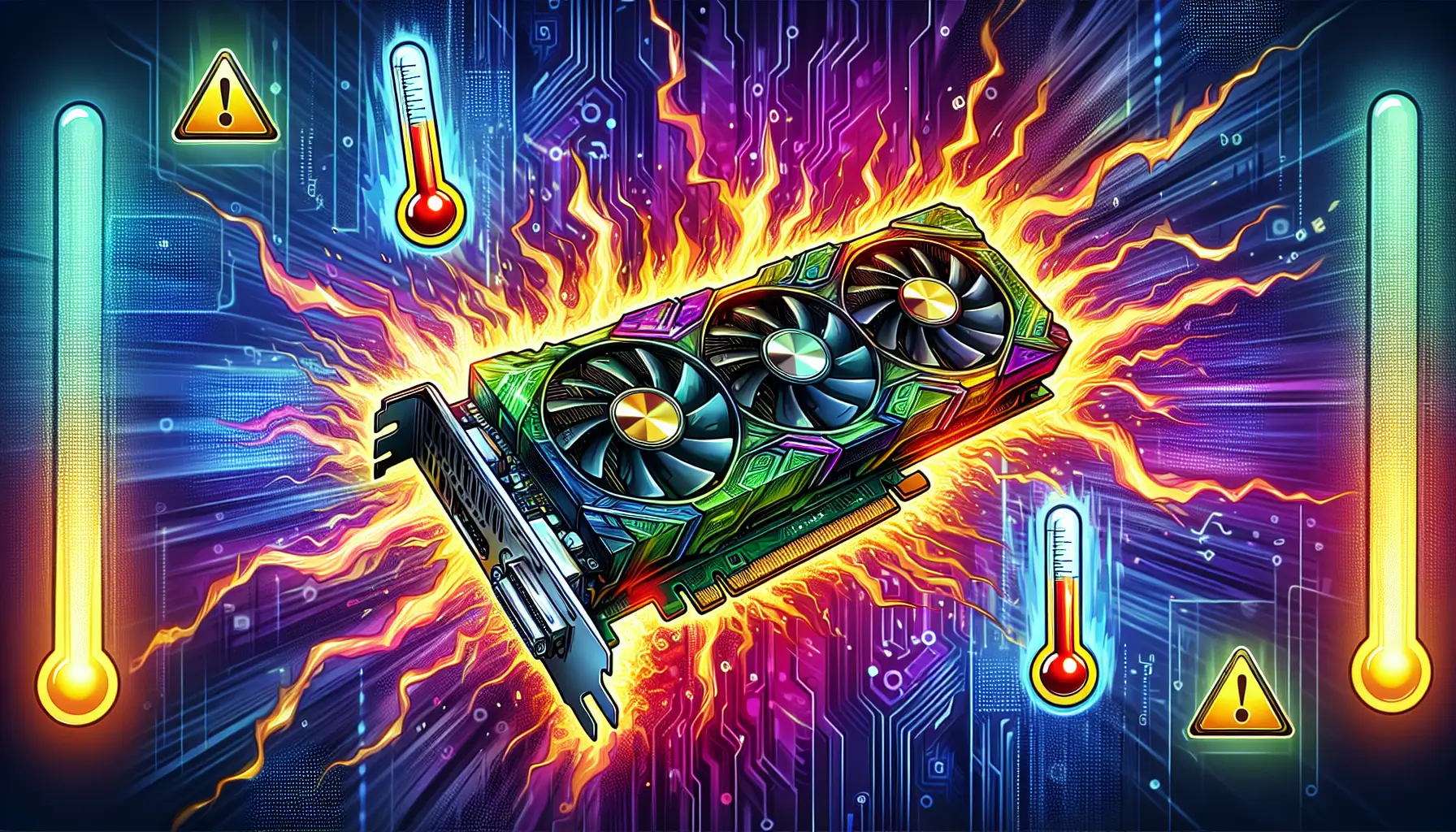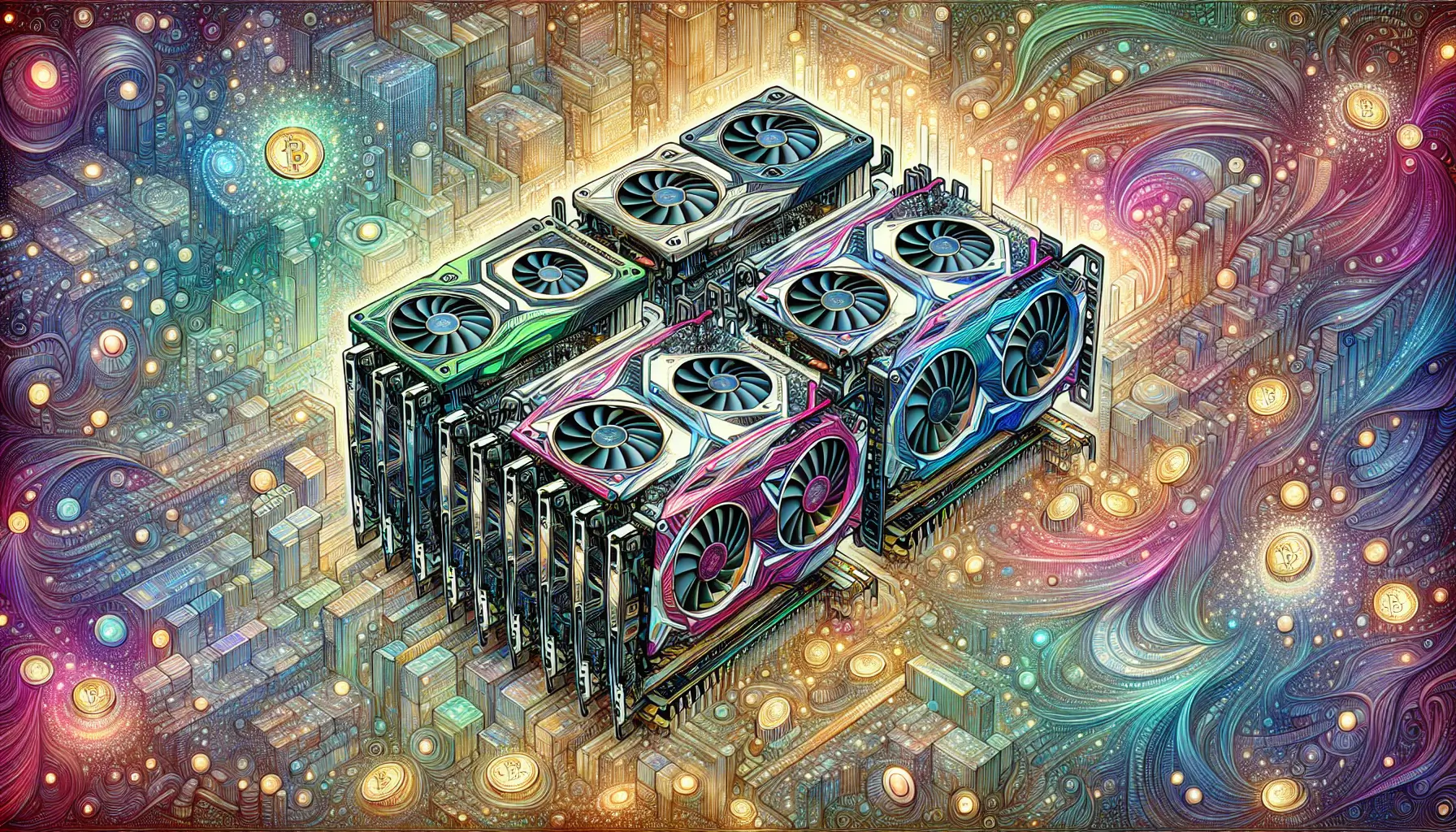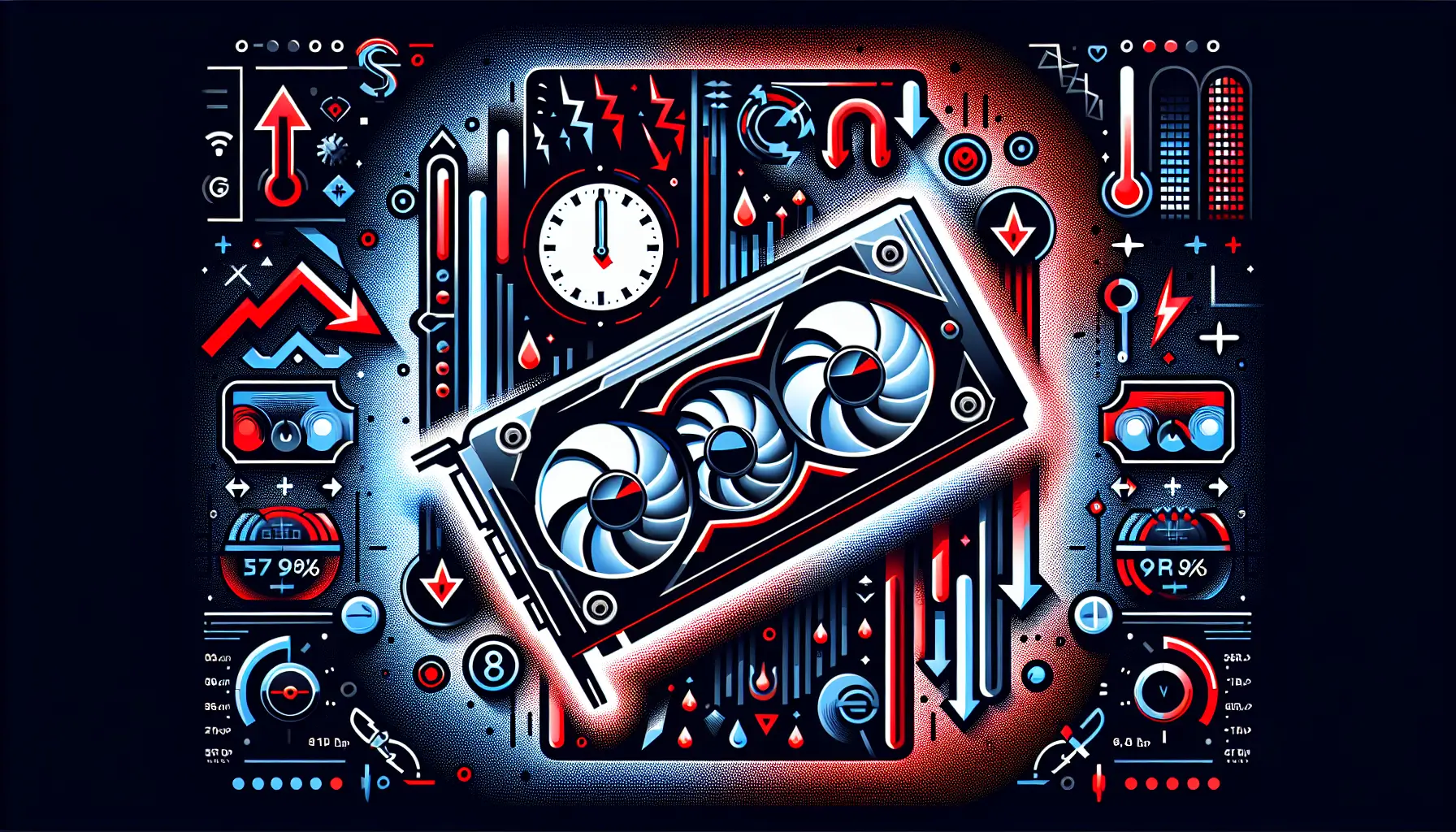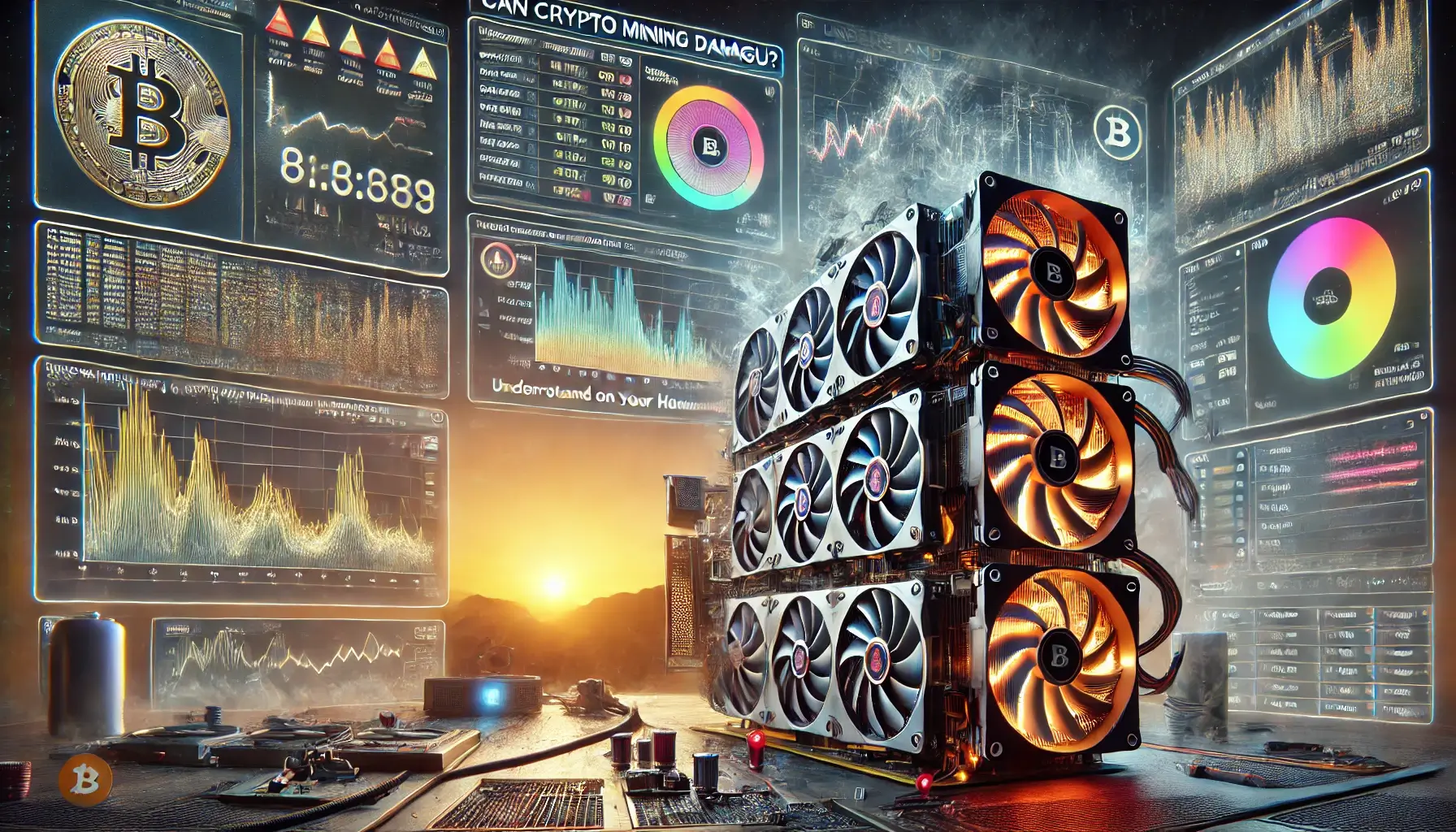Can crypto mining damage your GPU? Yes, it can. High temperatures and continuous heavy workloads from mining can cause wear and tear on your GPU’s components, potentially leading to damage. However, you can minimize these risks with proper cooling and regular maintenance. This article will explain how mining affects your GPU, what dangers to watch for, and how to keep your hardware in good condition, especially considering that crypto mining can damage your GPU if not managed properly.
Key Takeaways
- Crypto mining can potentially damage GPUs due to high temperatures and continuous stress, but risks can be mitigated with proper cooling and maintenance.
- GPUs are essential for mining due to their superior parallel processing capabilities, enabling efficient handling of complex computations required for validating blockchain transactions.
- Regular maintenance, including cleaning, reapplying thermal paste, and managing power consumption, is crucial to prolong GPU lifespan and performance during mining activities. When considering a mining GPU, it’s important to research and inspect for reliability and care to ensure it meets performance expectations.
| Aspect | Explanation |
|---|---|
| Impact on GPU Hardware | Crypto mining involves continuous usage at high loads, which can stress the GPU components like the processor, fans, and memory. |
| Thermal Stress | If not managed properly, mining generates significant heat, potentially leading to thermal throttling, overheating, or long-term component wear. |
| Fan Degradation | Fans in GPUs are prone to wear out faster due to constant operation under high temperatures. Over time, this can reduce the cooling efficiency. |
| Overclocking Risks | Overclocking is common in mining to increase performance. However, if done improperly, it can lead to voltage instability, excess heat, and GPU failure. |
| Power Consumption | Mining pushes GPUs to their power limits, leading to higher electricity consumption, which may cause power delivery issues or strain the power supply. |
| Cooling Requirements | Adequate cooling solutions (airflow, liquid cooling, etc.) are essential for preventing damage from prolonged heat exposure during mining. |
| Memory Wear | The VRAM on GPUs experiences heavy load during mining, particularly for memory-intensive algorithms like Ethereum’s Ethash. Prolonged mining may reduce memory performance. |
| Lifespan Reduction | Continuous high-load usage typically reduces the overall lifespan of a GPU. However, the impact can be minimized with proper management, such as thermal monitoring and cooling. |
| Manufacturer Warranties | Many manufacturers may void the warranty of GPUs if they determine the hardware was used for crypto mining, as it can cause wear beyond regular use. |
| Mitigating Damage | – Proper ventilation and cooling systems – Regular cleaning to prevent dust buildup – Monitoring temperatures with software – Avoiding extreme overclocking |
| Resale Value Impact | Mining can affect the resale value of a GPU. Buyers often avoid used GPUs from miners due to concerns about wear and performance degradation. |
| Signs of GPU Damage | Decreased performance, frequent crashes, visual artifacts in games, or higher-than-usual temperatures during standard tasks may indicate GPU degradation due to mining. |

Crypto and bitcoin mining, for example, are evolving activities that require solving complex mathematical problems and blockchain to validate transactions. This process demands significant computational power, making GPUs ideal due to their ability to excel at parallel processing, unlike CPUs.
Using a mining GPU can increase stress and wear on the graphics card. The heat generated during mining is a significant concern, potentially causing thermal damage and reducing GPU lifespan. Additionally, buyers often worry about the reliability and care of used mining GPUs, emphasizing the importance of thorough research and inspection before purchasing.
The high power draw and load during mining can also impact GPU longevity. Understanding these factors helps users optimize their mining setup to maximize hardware lifespan and performance.
Understanding Crypto Mining and GPUs

Understanding the mining process and the role of GPUs helps grasp the potential impact of crypto mining on GPUs. Crypto mining involves solving complex puzzles to validate further blockchain transactions. GPUs excel in this task due to their architecture, which allows for parallel processing and handling multiple calculations simultaneously.
With the power limit of their multiple cores, GPUs are significantly more efficient at handling intensive mining tasks than CPUs. However, the continuous stress from 24/7 mining operations can lead to increased heat, wear, and potential damage to the GPU’s components, ultimately affecting the GPU’s lifespan and performance. This efficiency makes them the preferred choice for miners aiming to maximize graphics cards, computational power, and mining rewards.
The Role of Graphics Processing Units (GPUs) in Mining
GPUs play a pivotal role in mining cryptocurrency by performing numerous calculations simultaneously, optimizing operations, and making them indispensable for cryptocurrency mining. While GPUs and CPUs work together to solve complex mathematical puzzles, GPUs lead due to their superior parallel processing capabilities.
Solving complex computations is essential for validating blockchain transactions, a critical aspect of crypto mining. The efficiency and speed of GPUs make them the backbone of any successful Bitcoin mining operation.
Why Crypto Mining Relies on GPUs
GPUs are preferred in mining cryptocurrency due to their architectural advantages, excelling in parallel task execution, unlike CPUs designed for sequential processing. This capability is especially beneficial for certain cryptocurrencies optimized for GPU mining.
The design of GPUs, with their multiple cores and high throughput, makes them ideal for maintaining a high hash rate, which is crucial for successful mining operations. This efficiency enhances mining performance and maximizes potential rewards for miners.
How Crypto Mining Affects GPU Lifespan

While GPUs are well-suited for mining, continuous operation can significantly stress the mining GPU’s components, leading to increased wear and tear that may reduce GPU lifespan. Adequate cooling systems prevent thermal throttling, which can degrade GPU efficiency and longevity.
With proper care and maintenance, a GPU’s lifespan can often exceed five years despite the heavy demands of mining. However, continuous heavy mining on graphics cards without adequate care can lead to physical damage and reduced performance.
Stress and Wear from Continuous Use
Continuous mining operations subject GPUs to heightened thermal stress, potentially leading to component failures. The constant high-demand usage accelerates wear and tear, potentially shortening GPU lifespan if not managed properly.
Thermal stress can degrade GPU performance over time, emphasizing proper cooling and maintenance to mitigate these effects.
Heat Generation and Its Effects
Mining generates significant heat, potentially damaging GPU components if not managed properly. Excessive heat can degrade components, underscoring the need for effective cooling strategies. Heat issues from poor airflow are a major problem for GPUs used in mining.
Thermal throttling and potential VRAM damage can occur with inadequately cooled Nvidia GPUs, especially those with GDDR6X memory. Due to thermal pad applications, RTX 3080 and 3090 Founders Edition GPUs are particularly troublesome when running hot.
Power Consumption and Load
Mining often requires GPUs to operate at consistently high power levels, negatively impacting their longevity. Continuous high power draw and load can increase wear on GPU components, potentially causing damage over time.
Effectively managing power consumption and load is crucial for maintaining GPU health during extensive mining. Strategies like power limiting can mitigate these effects and prolong hardware lifespan.
Managing GPU Temperature During Mining

Effective temperature management prevents GPU overheating during mining, which can lead to damage. Regularly monitoring GPU temperature, increasing fan speed, and optimizing air circulation are critical steps in protecting your hardware to prevent overheating.
Maintaining a stable environment with controlled temperature and humidity is crucial for GPU longevity. Regularly removing dust from cooling components and keeping mining equipment clean and dry can prevent overheating and maintain optimal performance.
Importance of Proper Cooling
Proper cooling systems maintain optimized GPU performance during crypto mining. Overheating can lead to thermal throttling, reducing performance. Effective cooling techniques, like enhanced airflow and liquid cooling systems, can significantly reduce GPU temperature, preserving performance and extending lifespan.
Adequate cooling preserves GPU performance and extends graphics cards’ lifespan, making it a vital aspect of crypto mining.
Fan Speed and Additional Cooling Solutions
Optimizing fan speed prevents GPU overheating during prolonged crypto mining sessions playing games. Adjusting fan speed helps maintain lower GPU temperatures, which is essential for performance and longevity.
In addition to fan adjustments, cooling solutions like liquid cooling systems provide superior heat dissipation compared to traditional air cooling. These strategies ensure GPUs remain cool within safe operating temperatures, preventing thermal spikes and potential damage.
Monitoring GPU’s Temperature
Regularly checking GPU temperatures prevents unexpected thermal spikes that might lead to hardware failures. Using real-time software tools to track temperature helps prevent overheating and identify potential issues before they cause hardware failure.
Establishing alert thresholds for temperature can proactively warn users of potential issues, ensuring any overheating is addressed promptly to avoid damage.
Maintenance Tips to Prolong GPU Lifespan
Maintaining optimal GPU temperatures enhances performance and extends hardware lifespan. Proper care and maintenance are crucial to mitigate the impact of crypto mining on GPU lifespan. Regular cleaning, reapplying thermal paste, and balancing overclocking with power limiting ensure the longevity of your mining GPUs.
With these strategies, a GPU’s lifespan during mining can potentially exceed five years, making it a valuable investment for miners.
Regular Cleaning and Dust Management
Regular cleaning is vital for maintaining optimal GPU performance and preventing overheating, which can shorten lifespan. Dust accumulation can severely impede cooling efficiency, leading to thermal issues during intensive tasks like crypto mining.
Ignoring dust maintenance can decrease GPU lifespan and increase the risk of damage from overheating. Cleaning your GPU at least every six months ensures dust doesn’t reach problematic levels.
Applying Fresh Thermal Paste
Reapplying thermal paste enhances heat transfer between the GPU and its cooler, improving efficiency and cooling performance. This simple maintenance task has significantly less heat generation and improves GPU heat transfer capacity, ensuring higher temperatures and better cooling and longevity.
Reapplying thermal paste on your GPU is crucial for maintenance and optimizing cooling performance, especially if you notice overheating issues.
Balancing Overclocking and Power Limiting
Combining overclocking with careful power management enhances GPU performance without significantly increasing the risk of damage. Implementing power limiting effectively manages heat output while allowing safe performance improvements.
Balancing overclocking and power limiting is crucial to prolong GPU lifespan and performance. This strategy maintains optimal temperature levels while efficiently managing energy consumption during mining.
Evaluating the Risks: Gaming vs. Mining

Crypto mining requires significantly greater graphics processing units and power than gaming, like running a full graphics card and playing intensive games on steroids. While both activities can lead to GPU wear, mining’s continuous workload generally puts more strain on the GPU playing games, negatively affecting the performance and lifespan of graphics cards.
The long-term effects of mining on GPUs make used mining GPUs a riskier purchase compared to those used primarily as graphics cards and for gaming.
Similarities in GPU Usage
Both gaming and mining require high-performance GPUs, stressing their capabilities. The continuous high-performance demands of both activities can lead to increased wear, tear, and potential GPU damage over time.
Despite these similarities, how GPUs are used in gaming and mining leads to different patterns of stress and wear on the hardware.
Differences in Duration and Intensity
Mining operations typically run continuously, while gaming sessions are often intermittent, resulting in differing stress levels on GPUs. Mining’s constant operation leads to a steadier workload, whereas gaming features intermittent usage.
Gaming sessions are typically shorter and less intense, while mining operates non-stop, potentially increasing thermal stress and shortening GPU lifespan.
| Factor | Gaming | Mining |
|---|---|---|
| Hardware Wear & Tear | Moderate. Frequent gaming sessions may cause wear on components like GPU and fans over time. | High. Mining requires constant, intense use of hardware, especially the GPU, leading to faster wear. |
| Electricity Costs | Moderate to high, depending on gaming frequency and system specs. | High. Mining requires continuous operation, leading to substantial electricity consumption. |
| Heat Generation | Moderate. Extended gaming sessions produce heat, but most systems can manage it with adequate cooling. | High. Mining generates significant heat, requiring robust cooling solutions to prevent overheating. |
| Environmental Impact | Low to moderate, depending on electricity usage. | High. Large-scale mining operations contribute significantly to carbon footprints due to electricity consumption. |
| Security Risks | Moderate. Online gaming can expose users to cyberattacks (e.g., account hacking). | High. Mining platforms may be targets for hacking, especially if the mined cryptocurrency has high value. |
| Financial Risk | Low. Costs are typically limited to the price of the game and hardware. | High. Cryptocurrency value fluctuations and initial investment in mining rigs pose financial risks. |
| Scalability | Low. Gaming performance is typically dependent on hardware limitations. | High. Mining can be scaled by adding more hardware or joining mining pools, which increases costs. |
| Legal and Regulatory | Low. Gaming rarely faces legal challenges except for certain age or content restrictions. | Moderate. Some countries regulate or ban cryptocurrency mining due to environmental and financial implications. |
| Upfront Costs | Moderate. Depends on the gaming setup and game purchases. | High. Mining rigs, GPUs, and cooling solutions are costly, making it a higher barrier to entry. |
| Longevity of Equipment | Moderate. Gaming PCs may last several years with occasional upgrades. | Low. Mining rigs, especially GPUs, wear out faster due to constant operation. |
Financial Considerations of Crypto Mining
The financial implications of crypto mining extend beyond the initial investment in high-performance GPUs. While gaming and cryptocurrency mining demand high GPU performance, mining operations can substantially increase electricity bills, diminishing overall profitability if not managed carefully. Potential miners should conduct a cost-benefit analysis to understand their break-even point before purchasing mining equipment.
Investing in specialized cryptocurrency mining hardware, such as ASICs, can be justified if miners consistently access low-cost electricity. This approach can make the difference between a profitable venture mine cryptocurrency and a financial drain, highlighting the importance of carefully evaluating the potential returns of mining cryptocurrency.
Cost of Increased Power Consumption
Mining operations run hot, which can lead to higher temperatures and significant increases in electricity bills, impacting the overall profitability of mining ventures. The profitability of mining operations can diminish rapidly with rising electricity, additional cooling costs, and operational expenses. Therefore, proper care in managing power consumption and optimizing the efficiency of mining cards are crucial steps for miners looking to maximize their returns.
Implementing power limits and optimizing GPU settings can help control power draw and reduce operational costs, making mining a more viable long-term investment.
Long-Term Hardware Investment
Investing in mining hardware requires knowledge and careful consideration of potential returns, as the initial costs can be higher than the actual earnings generated. When buying a used mining computer or mining GPU, it is essential to research the condition and history of the used mining computer or mined using the graphics card to avoid purchasing hardware that may have been subjected to extensive wear and tear.
The recommendation for buying your graphics and mining cards is to purchase new ones to ensure better performance and longevity. This approach to graphics cards and mining GPUs can safeguard your investment and provide a more reliable foundation for your mining operations.
Safety Precautions When Using Mining Software
Safety is paramount when it comes to selecting and using mining software. It’s crucial to choose software from reputable sources to minimize security threats. Not all mining software guarantees safety; some may pose significant risks, including malware infection and compromised security.
Choosing reliable miners and mining software helps avoid potential security breaches, ensuring that your mining process and operations are safe and efficient. This section will guide you through the best practices for selecting trusted miners and mining programs and avoiding untrusted miners and software.
Avoiding Malware and Untrusted Software
Using untrusted mining software can result in malware infection and compromised security. Unverified mining applications can expose users to phishing attempts and data theft, leading to significant data breaches and loss of personal information.
Ensuring that your mining software comes from well-established sources to mitigate these risks is essential. By avoiding unreliable mining applications, you can protect your system from potential security threats.
Selecting Trusted Mining Programs
Using trusted mining programs is essential to ensure security and protect against data breaches. To identify trusted mining programs, look for established reputations, user reviews, and transparency in operations.
Some reputable mining software options include well-known platforms with positive user feedback and robust security measures. Selecting such programs can safeguard your mining operations and ensure they run smoothly and securely.
Summary
In conclusion, while crypto mining does not inherently damage GPUs, it does pose significant risks due to continuous high-demand usage, increased heat, and power consumption. By understanding the potential impact of cryptocurrency mining on your GPU, you can implement strategies to mitigate these risks and ensure the longevity and performance of your hardware. Proper cooling, regular maintenance, and careful monitoring of GPU temperatures are crucial steps in maintaining your mining setup.
Evaluating the financial considerations and selecting trusted mining software are also essential aspects of a successful Bitcoin mining operation. By following these guidelines, you can protect your investment and navigate the challenges of crypto mining with confidence and knowledge.
Frequently Asked Questions
Can crypto mining damage my GPU?
Yes, crypto mining can damage your GPU due to continuous high-demand usage that increases wear and heat generation, potentially affecting its longevity if not managed properly.
How can I prevent my GPU from overheating during mining?
To prevent your GPU from overheating during mining, implement effective cooling systems, regularly monitor temperatures, and optimize fan speeds. These measures will help maintain your GPU’s performance and lifespan.
Is it safe to use any mining software?
It is not safe to use just any mining software; always choose software from reputable sources to protect yourself from malware and data breaches.
What are the financial considerations of crypto mining?
Crypto mining entails significant financial considerations, particularly regarding high electricity costs and the need for substantial hardware investments. A thorough cost-benefit analysis is essential to evaluate the profitability and long-term viability of the cryptocurrency mines.
How does gaming compare to mining in terms of GPU wear?
Gaming generally causes less wear on a GPU than mining, as gaming sessions are often shorter and less demanding. In contrast, the mining process involves constant high-load operation, leading to increased stress and reduced lifespan of the GPU.







